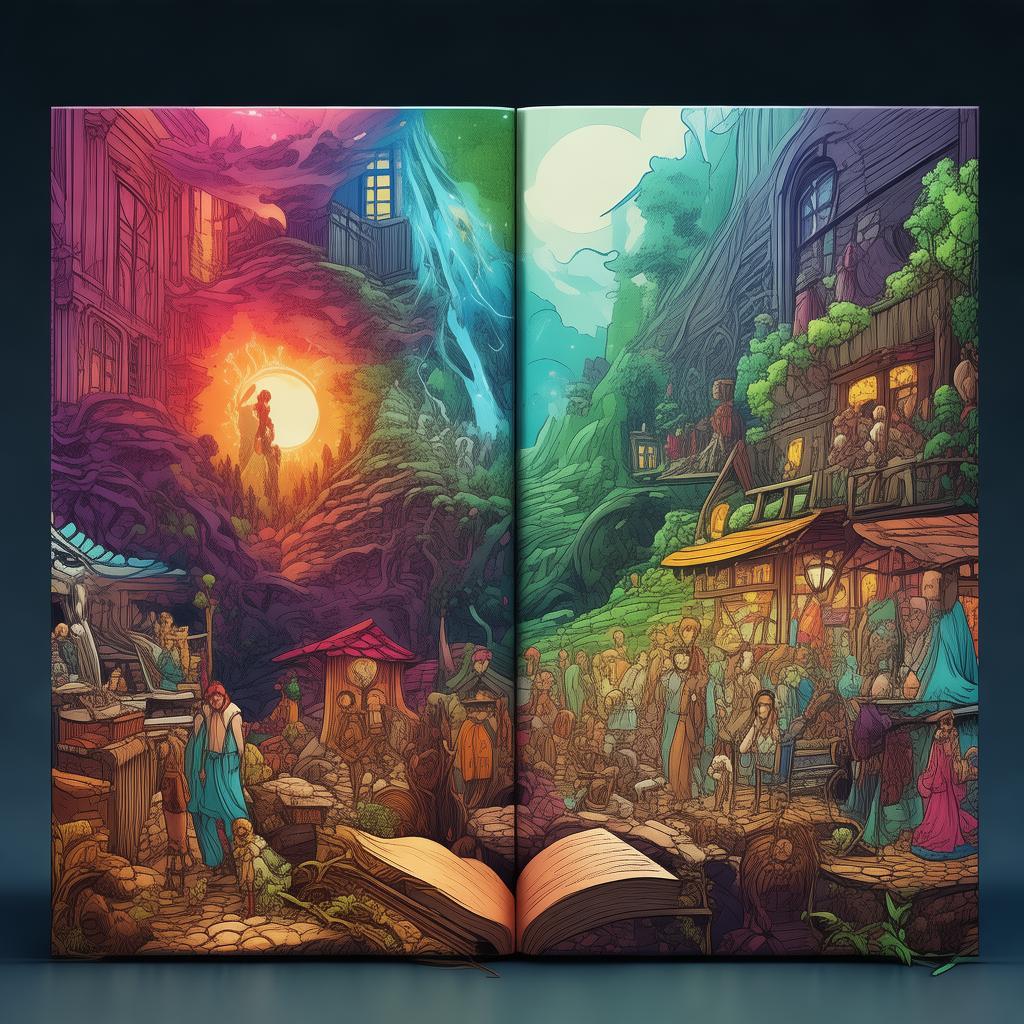Whispers in the Shadows
The year was 1850, in the bustling streets of Victorian London. The air was thick with the scent of coal smoke and the sound of carriages clattering over cobblestone. At the heart of the city, the grand estate of the renowned art collector, Lord Blackwood, was a sanctuary for the elite and the enigmatic.
Ellen, known to the world as Lady Clara, was a woman of many mysteries. Her elegant dress concealed a body that bore the scars of a past she preferred to forget. Her eyes, the color of twilight, held a story of a life not her own. She was a woman of color, a rarity in the polite society of the time, and her skin, a deep chestnut, was the reason for her alter ego.
One rainy afternoon, as Lady Clara strolled through the gardens of Blackwood's estate, a peculiar sight caught her eye. A woman, draped in a veil of shimmering blue silk, whispered words to the wind. The color of the veil, a symbol of the unknown, intrigued Ellen. She was a woman of the world, yet the sight of the veil invoked a sense of familiarity, a connection to her own past.
Ellen's story began years before in the colonies, where she was known as Aisha. Her skin, her eyes, her very existence was a secret to be kept, a lie to protect herself from the prejudices of her time. Aisha was a painter, her art a silent rebellion against the society that sought to silence her voice. She painted in the vibrant colors of the Caribbean, using her art to speak of the beauty and struggle of her people.
When Aisha's world was torn apart by tragedy, she left behind her art, her name, and her life. Ellen, the woman in the blue veil, was her creation, her mask. It was a mask she had worn for years, a shield against the world that would not accept her.
As Ellen delved deeper into the estate, she discovered a series of paintings hidden within the walls, each depicting a scene from her past. Each painting was a puzzle, a clue to the truth she had long buried. Among them was a portrait of a man, his eyes dark like the night, and a woman whose features were strikingly similar to Ellen's own.
The portrait was of her mother, a woman of African descent, and her father, a man of European descent. The image revealed a family torn apart by the color of their skin. Ellen's mother had been forced to leave her family, her identity stolen, and her past forgotten. Ellen had been raised by her father, who never knew the truth of his wife's fate.
The discovery of the portrait sent Ellen into a spiral of self-doubt and anger. Why had her father kept the truth from her? Why had she been raised as Lady Clara, a woman of the world, when her true heritage was one of struggle and resilience?
Her investigation led her to Lord Blackwood himself. A man known for his vast art collection and his insatiable curiosity, Blackwood was the owner of the portraits and the blue veil. Ellen confronted him, demanding answers.
"I have been waiting for you," Lord Blackwood said, his voice a whisper in the shadowy corners of the room. "You are the key to the mysteries I have sought to uncover for years."

Ellen was thrown into a web of intrigue and deceit. Blackwood, it turned out, was not just an art collector but a historian, seeking to uncover the untold stories of the past. He believed Ellen's past was the key to unlocking a hidden truth that would change the course of history.
Together, they embarked on a journey to uncover the truth about Ellen's mother, her art, and the meaning behind the blue veil. The more they delved into the past, the more they realized that Ellen's story was just one piece of a much larger puzzle.
As the pieces fell into place, Ellen discovered that her mother's art had been a testament to her resilience and love, a way to keep her spirit alive. The blue veil, it seemed, was more than a symbol of the unknown; it was a reminder of her mother's hope that one day, her daughter would know the truth.
In a climactic confrontation, Ellen revealed her true identity to Lord Blackwood, and together, they faced the consequences of their discovery. The world, it seemed, was not ready to accept the truth about Ellen's past, and the veil had become a symbol of her struggle to belong.
The story reached its emotional peak when Ellen chose to embrace her heritage, not as a burden, but as a part of her identity. She painted once more, her brushstrokes a celebration of her past and her future.
The blue veil, now a symbol of her strength and resilience, was hung in the estate's gallery, a reminder to all who saw it of the power of truth and the beauty of color.
The ending left readers with a sense of hope, a reflection on the strength of the human spirit, and a question: What color will you choose to wear in the world that is yours to shape?
✨ Original Statement ✨
All articles published on this website (including but not limited to text, images, videos, and other content) are original or authorized for reposting and are protected by relevant laws. Without the explicit written permission of this website, no individual or organization may copy, modify, repost, or use the content for commercial purposes.
If you need to quote or cooperate, please contact this site for authorization. We reserve the right to pursue legal responsibility for any unauthorized use.
Hereby declared.









